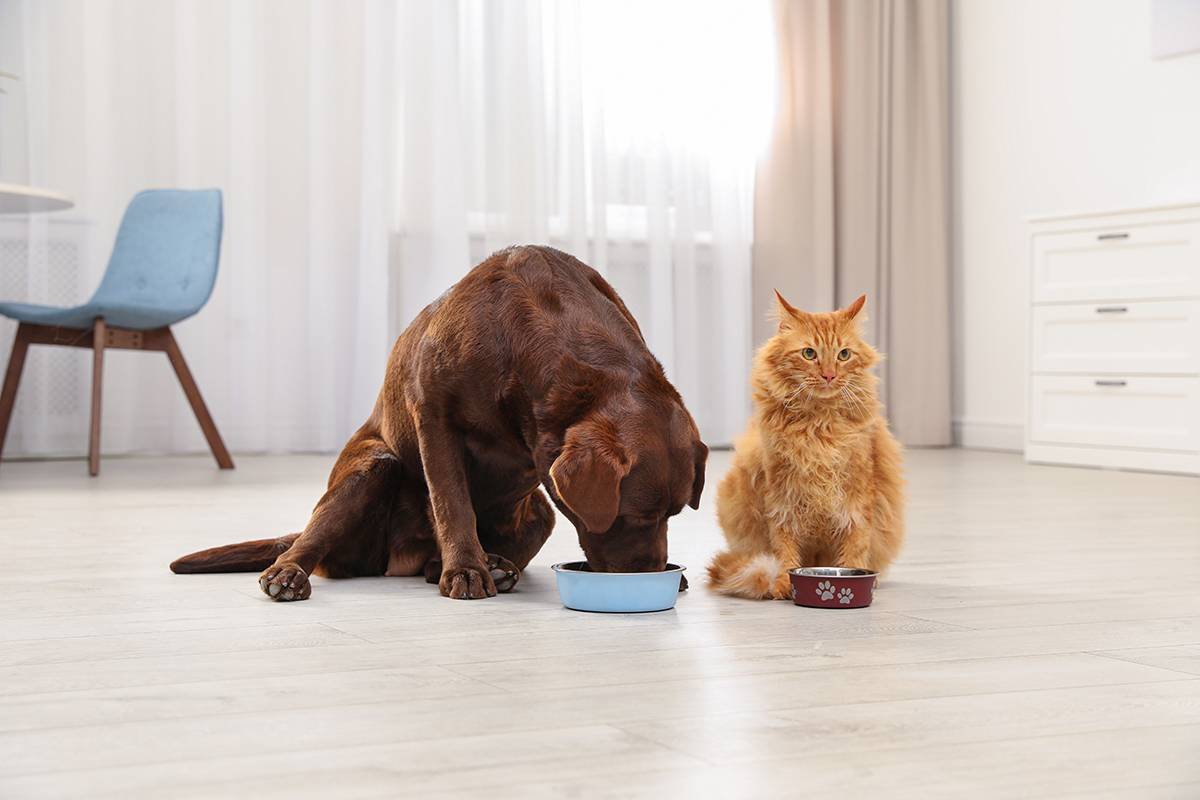
Choosing the Right Food for Your Pet
Pet owners today enjoy a wide range of quality prepared pet foods to keep their dogs and cats happy and healthy. This variety means that pet owners can choose the foods that provide their pet with the nutrition it needs and the product form that they and their pets prefer.
Pets are individuals and owners decide on what foods meet their particular circumstances. This includes consideration of the pet’s activity level, lifestyle and life stage (e.g puppy or kitten vs adult), the pet’s preferences in regards to food and the owner’s opinion regarding convenience, cost, variety and suitability of various available pet foods. There is no particular right way to feed pets, as long as the nutritional needs of the dog or cat are being met. In many cases owners “mix and match” a variety of different types of pet foods and that’s fine, providing owners observe a couple of important things with regards to their pet’s food:
• The food should provide the correct amount, balance and availability of the nutrients to meet the nutritional needs of the pet for physical and mental health and activity. Look for a statement on the packaging about nutritional completeness.
• The food offered should be sufficiently concentrated to enable the dog or cat to meet its nutritional needs by eating a reasonable amount of the food provided and easily digested, so that the stools of the pet are well-formed, making it easy to clean up.
• Palatability is an important consideration, to ensure the food is eagerly consumed since an uneaten meal has no nutritional value. Feeding time should be an enjoyable experience and rewarding for both the owner and the pet.
Foods must provide the following:
• Energy (measured in calories or joules) which the dog or cat needs for muscle function for movement, a wide variety of bodily functions and to keep itself warm.
• Proteins and other nutrients for growth, repairing body tissues or reproduction.
• Fats for energy and essential fatty acids.
• Vitamins, minerals, and other micronutrients to regulate these processes.
• Fresh, clean water should always be available.
If in doubt, your vet can help provide advice about care and feeding of your pet.
Prepared pet foods offer many choices to feed a complete and balanced diet while providing safety and convenience. They also offer the opportunity for flavour or texture variety while maintaining consistency of feeding, helping to avoid digestive upsets.
The nutritional requirements of a pet change throughout its life and are influenced by factors such as: age, whether the pet is active or sedentary, reproduction status, the state of the pet’s health and environmental conditions. In meeting the particular needs of an individual animal, the owner must provide the required amount and correct balance of energy and essential nutrients in a quantity of food the pet will consume. Since animals eat primarily to meet their calorie requirements, essential nutrients need to be present in the correct amounts relative to the energy (calories) in the food. This is what is meant by “complete and balanced” nutrition. The choice of food type for pet dogs and cats is very much a personal matter. While various factors are involved in this choice, the main points to consider are:
• Owner preference for a type of feeding (e.g canned, dry, semi-moist, or a combination).
• The feeding habits of the pet. Every pet is different and each may have personal preferences for canned, chilled rolls and tubs, pouch or dry foods. Of course, many pets enjoy the variety offered by combining these pet foods.
• Economic considerations and convenience.
